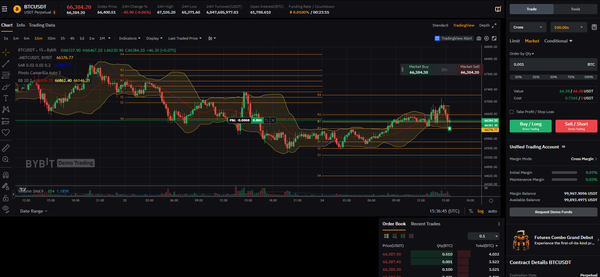MicroStrategy’s Bold Move: Borrowing from Public Markets to Buy Bitcoin – Is This a Bet Against the US Dollar?

MicroStrategy, under the leadership of CEO Michael Saylor, has embarked on a groundbreaking strategy that involves borrowing from public markets to purchase Bitcoin. This move has not only garnered significant attention but also raises an intriguing question: Is this equivalent to a trade where MicroStrategy is effectively shorting the US Dollar? Let's delve into the details.
1. Raising Capital through Debt Offerings
MicroStrategy has raised substantial capital through various forms of debt, including:
- Convertible Notes: These are debts that can be converted into shares of MicroStrategy at a later date. They often come with low-interest rates, making them attractive to investors who see potential upside if the company’s stock performs well.
- Senior Secured Notes: These traditional bonds are backed by the company’s assets, providing a safety net for investors in case of default.
2. Investing in Bitcoin
The funds raised from these debt offerings are then used to purchase Bitcoin. Michael Saylor and his team believe that Bitcoin is a superior store of value compared to traditional fiat currencies, particularly in an era of inflation and uncertain monetary policies.
3. Bitcoin as a Corporate Treasury Reserve
By converting significant portions of their cash reserves into Bitcoin, MicroStrategy aims to preserve and enhance shareholder value over the long term. The underlying belief is that Bitcoin's value will appreciate over time, outpacing traditional cash management strategies.
4. Market Reactions and Stock Performance
MicroStrategy’s aggressive Bitcoin acquisition strategy has attracted considerable attention from both investors and the media. This has led to increased volatility in their stock price, as the company’s performance becomes closely tied to Bitcoin’s market price.
5. Impact of Debt on Financial Health
Borrowing from public markets to buy Bitcoin involves significant financial risk. The company has taken on substantial debt, and the interest payments on these debts are a financial commitment that must be met regardless of Bitcoin’s performance. However, Michael Saylor and his team believe that the potential long-term appreciation of Bitcoin outweighs these risks.
6. Strategic Rationale
Michael Saylor’s rationale for this strategy includes:
- Hedging against inflation: Saylor argues that Bitcoin is a better hedge against inflation than cash or traditional assets.
- Long-term value proposition: He believes Bitcoin will continue to appreciate significantly in value over the long term.
- Market leadership: By being one of the first major publicly traded companies to adopt Bitcoin so extensively, MicroStrategy positions itself as a leader in the corporate adoption of cryptocurrencies.
7. Risk Management
MicroStrategy is aware of the volatility and risks associated with Bitcoin. The company has set up strategies to manage these risks, including maintaining sufficient liquidity to meet debt obligations and being transparent with investors about the risks and rewards of their Bitcoin strategy.


Is This Equivalent to Shorting the US Dollar?
MicroStrategy’s strategy can indeed be seen as an implicit bet against the US Dollar. Here’s why:
1. Borrowing in USD to Buy Bitcoin
By issuing debt in USD and using the proceeds to buy Bitcoin, MicroStrategy is effectively converting borrowed dollars into Bitcoin. This action can be interpreted as a short position on the USD, as they are exchanging dollars for an asset they believe will outperform the dollar.
2. Bitcoin as an Inflation Hedge
Michael Saylor has frequently articulated that he views Bitcoin as a hedge against inflation and the devaluation of fiat currencies, particularly the USD. By holding Bitcoin instead of USD or dollar-denominated assets, MicroStrategy is positioning itself to benefit if the USD loses value over time relative to Bitcoin.
3. Interest Payments and Bitcoin Appreciation
The debt issued to buy Bitcoin requires regular interest payments in USD. If Bitcoin appreciates significantly relative to the USD, the value of MicroStrategy’s Bitcoin holdings should increase faster than the cost of the interest payments. This is akin to benefiting from a long position in Bitcoin (and by extension, a short position in the USD).
4. Diversification from USD Exposure
Traditional corporate treasuries often hold substantial cash reserves in USD. By shifting a large portion of its treasury into Bitcoin, MicroStrategy is reducing its exposure to the USD. This diversification strategy aligns with the idea of being short on the USD, as the company reduces its reliance on and exposure to the currency.
5. Market Perception
The financial markets and investors often perceive such moves as a bet against the USD. When a company like MicroStrategy takes on significant debt to purchase Bitcoin, it sends a signal that they expect the USD to weaken relative to Bitcoin over time.
6. Potential Risks and Rewards
- If USD Weakens: Should the USD weaken due to inflation or other macroeconomic factors, Bitcoin (often seen as a deflationary asset) could appreciate, enhancing MicroStrategy’s balance sheet and providing significant returns.
- If USD Strengthens: Conversely, if the USD strengthens and Bitcoin’s value declines, MicroStrategy faces the risk of its debt obligations becoming more burdensome relative to the value of its Bitcoin holdings.


Conclusion
MicroStrategy’s strategy of borrowing from public markets to buy Bitcoin is a bold and pioneering approach to corporate treasury management. It reflects a strong belief in Bitcoin’s potential as a long-term store of value and a hedge against economic uncertainties. However, it also exposes the company to significant risks, particularly given Bitcoin’s volatility and the financial commitments associated with the debt issued to fund these purchases.
In essence, this strategy can be viewed as a sophisticated financial maneuver equivalent to shorting the USD. By converting borrowed dollars into Bitcoin, MicroStrategy is implicitly betting that the value of the USD will decline relative to Bitcoin. This reflects a strategic stance against the potential depreciation of the dollar and a strong belief in Bitcoin’s long-term value appreciation.
MicroStrategy’s move is not just a bet on Bitcoin; it’s a statement about the future of money and value in the digital age. Whether this gamble pays off remains to be seen, but it certainly positions MicroStrategy at the forefront of the corporate Bitcoin adoption movement.




